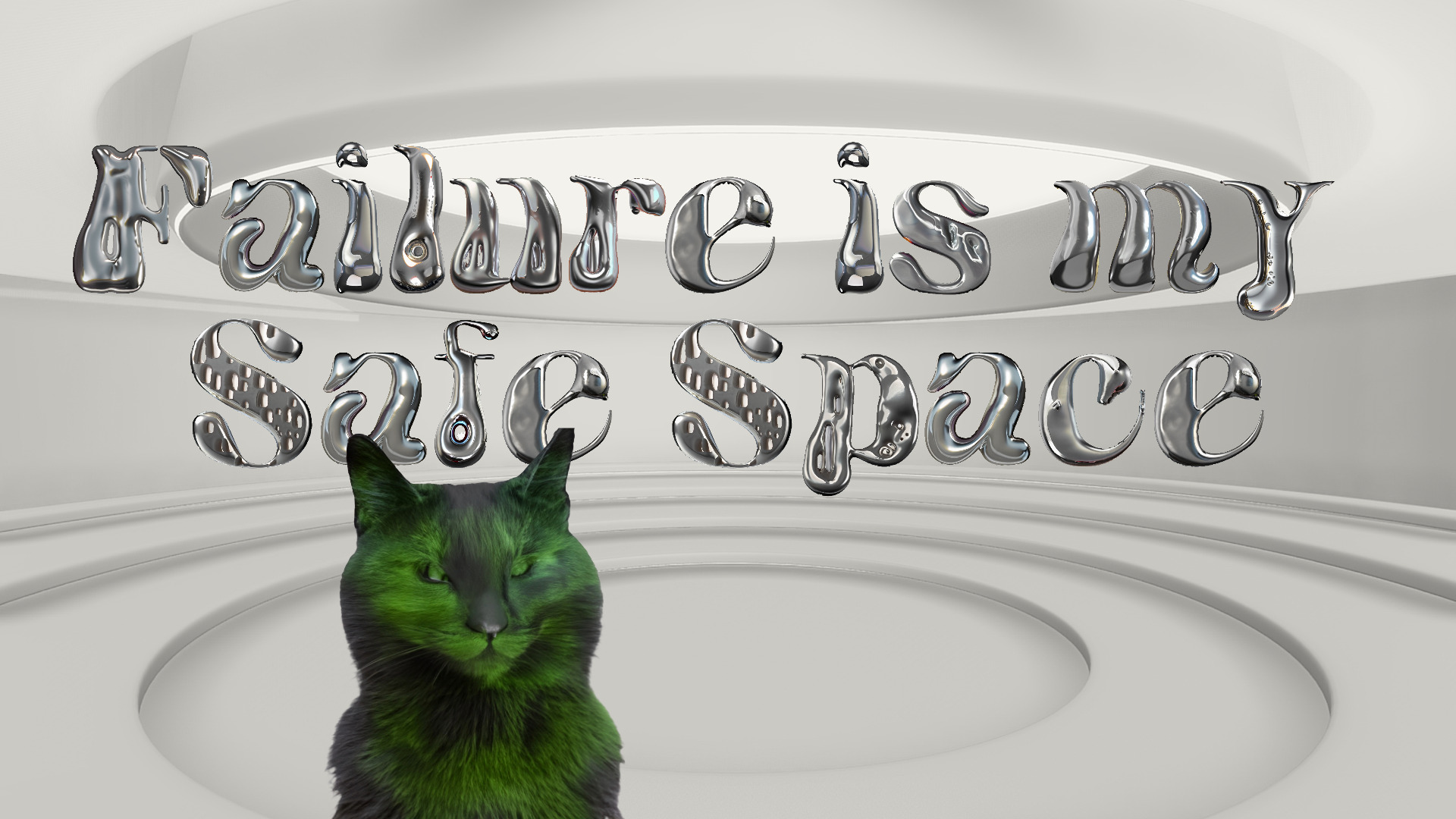Failure Is My Safe Space
VR Space with audio narration | 2024 | the work is part of the project EXIT SPACE curated by Sasha Puchkova and Francesca Ceccherini Promoted by Pro Helvetia Moscow liaison
"Failure Is My Safe Space" is a reflection on the facets of procrastination in connection with neurodivergence and an examination of the significance of failure in artistic creation. The audio narration is set in an empty exhibition space. It questions conventional definitions of success and invites listeners to reevaluate the role of doing nothing in a performance-oriented society. It opens a space where failure is celebrated as a conscious counter-movement to neuro-normativity and the prevailing expectations of success in a neoliberal world.
At the heart of this audio narration is a neurodivergent artist whose creative process is both enriched and challenged by their neurodivergence. The story intertwines personal experiences with philosophical and artistic references. Initially, the Italian movements of Operaism and Autonomia are discussed, which consider refusal of work as resistance against capitalist exploitation and as a means of self-liberation. The Yugoslavian artist Mladen Stilinovic and his view of laziness as an essential part of art, as well as his critique of the relentless production mentality in the West, are also addressed. The work then incorporates Samuel Beckett's idea, presenting 'Fail worse again' and 'Throw up for good' as a form of liberation and interpreting failure not as continuous improvement but as a radical questioning of conventional success. Finally, the work introduces Jack Halberstam, who elaborates failure from a queer perspective and sees it as an opportunity to stand against the toxic normativity in our contemporary society.
The narrator of the story is a green cat, whose voice was created using text-to-speech technology. With the green cat Vanecek pays homage to the artist Hermann Reinfrank, who, in 1997, posted a parcel for the green cat at the Linsenbühl post office. Intriguingly, this package remains in circulation to this day, undelivered to its enigmatic recipient.
The empty circular exhibition space, where the story unfolds, is a deliberate setting. While the Metaverse is usually associated with an immersive virtual world filled with interactions, dynamic elements, and visual discoveries, the world of "Failure Is My Safe Space" offers a radically different perspective instead. In this minimalist space, the only possible movement is to turn in circles. This seemingly banal action becomes a symbol for the inner world of the neurodivergent protagonist. The circular movement represents not just the physical limitation within the space but also the 'racing thoughts', which can lead to a cyclical pattern of overthinking that's hard to break and that is very characteristic of ADHD. These cyclic thought processes can manifest themselves in the endless loop of procrastination and creative struggle.
This setting breaks with the conventions of the Metaverse and reflects, in a subtle way, one aspect of the neurodivergent experience. As a result, visitors are encouraged to question their own expectations and reevaluate the significance of "doing nothing" in a performance-oriented society. This unique experience highlights the message that failure and deviation from the norm can be understood not only as creative acts but also as forms of resistance against prevailing expectations.
